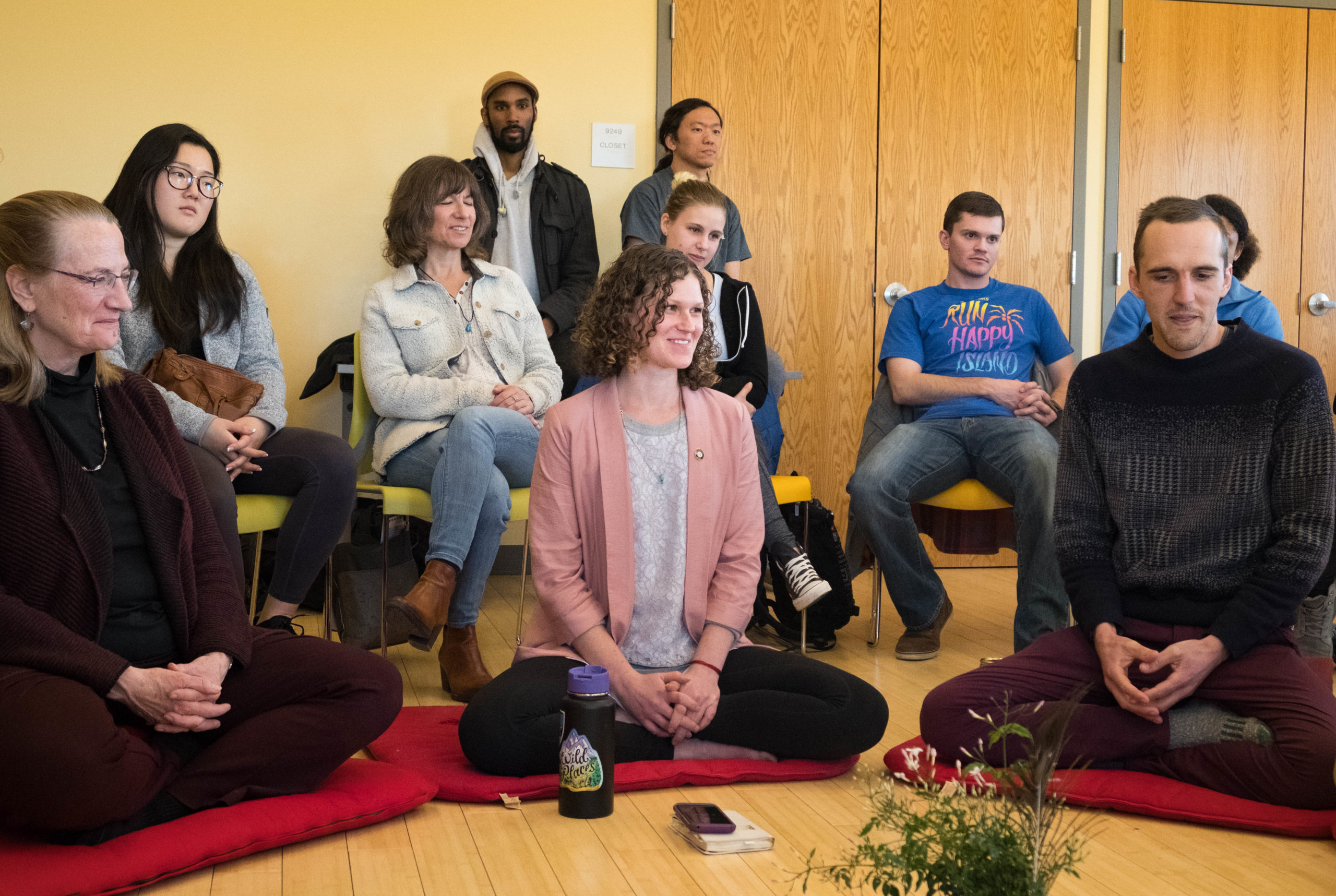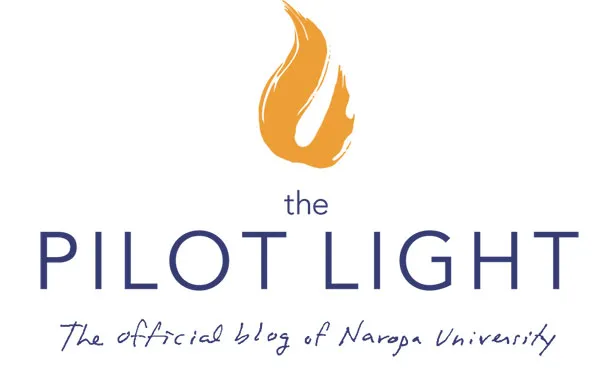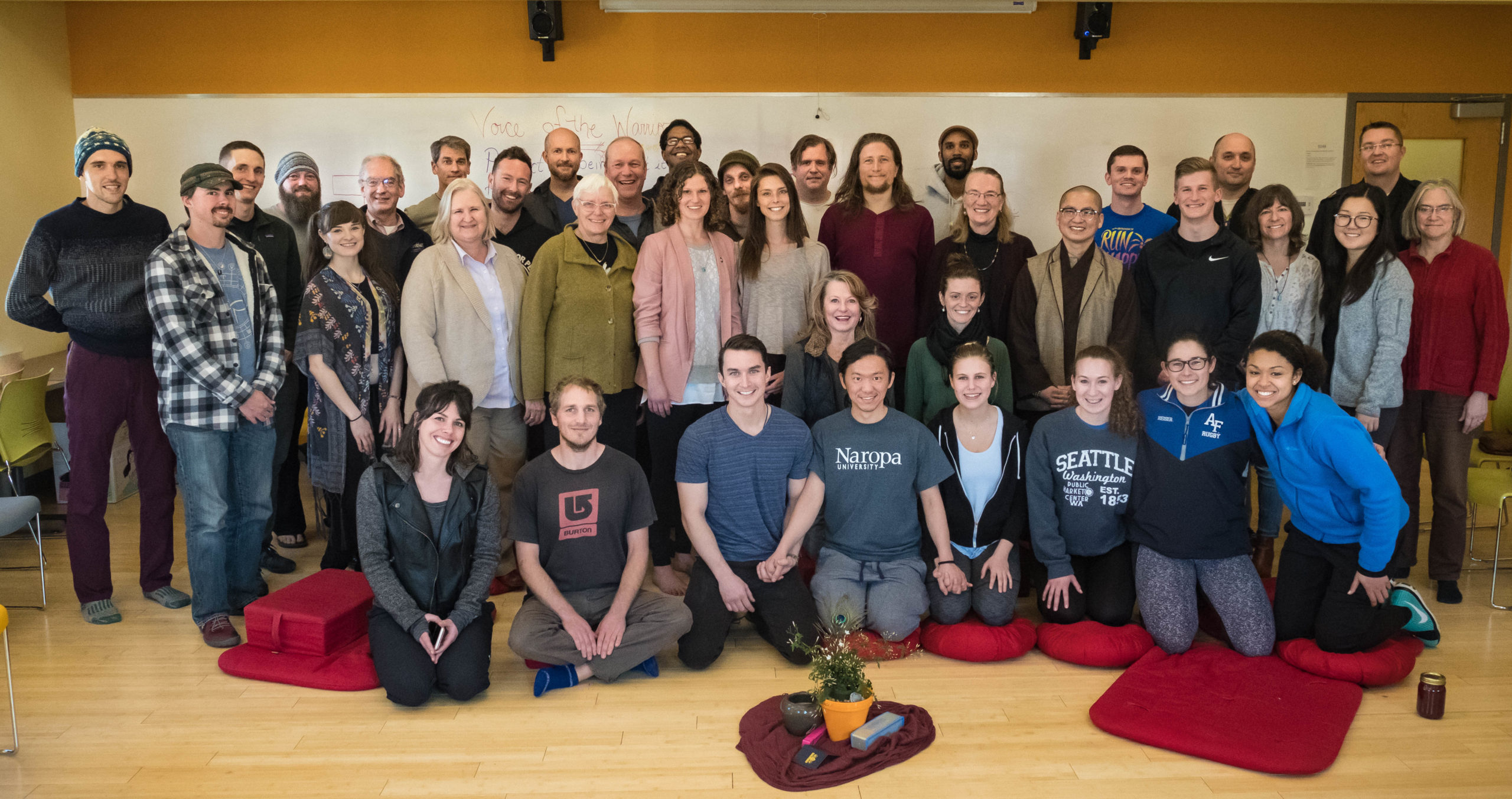
By Jenna C. Jennings, Naropa University Veteran Success Coordinator
It is truly powerful to sit in a circle of people in silence; all paying mind to the unfoldment of a narrative each person took part in creating.
This is what I am most impacted by from the Voice of the Warrior event that took place on Tuesday, March 6th, that brought together the words of Naropa University student veterans, students, faculty, and staff, as well as guests Kelly Wulf from Comeback Yoga, Mark Williams, Naropa graduate and veteran fighter pilot; Brett Campbell; Naropa graduate and U.S. Air Force Chaplain; and Dr. Michelle Butler, professor at the U.S. Air Force Academy, and her young cadets.
This spring semester, Naropa’s Practice Day was entitled Interconnectedness: The Root of Loving Community. The way I personally feel drawn to engaging in community is from a place of remembrance. Remembrance for the sacredness of our human condition; both the beautiful and the ugly, the extraordinary and the mundane, give rise to the ability to experience all of it, life. And we cannot experience it, nor make it through it, alone. We truly are in this together.
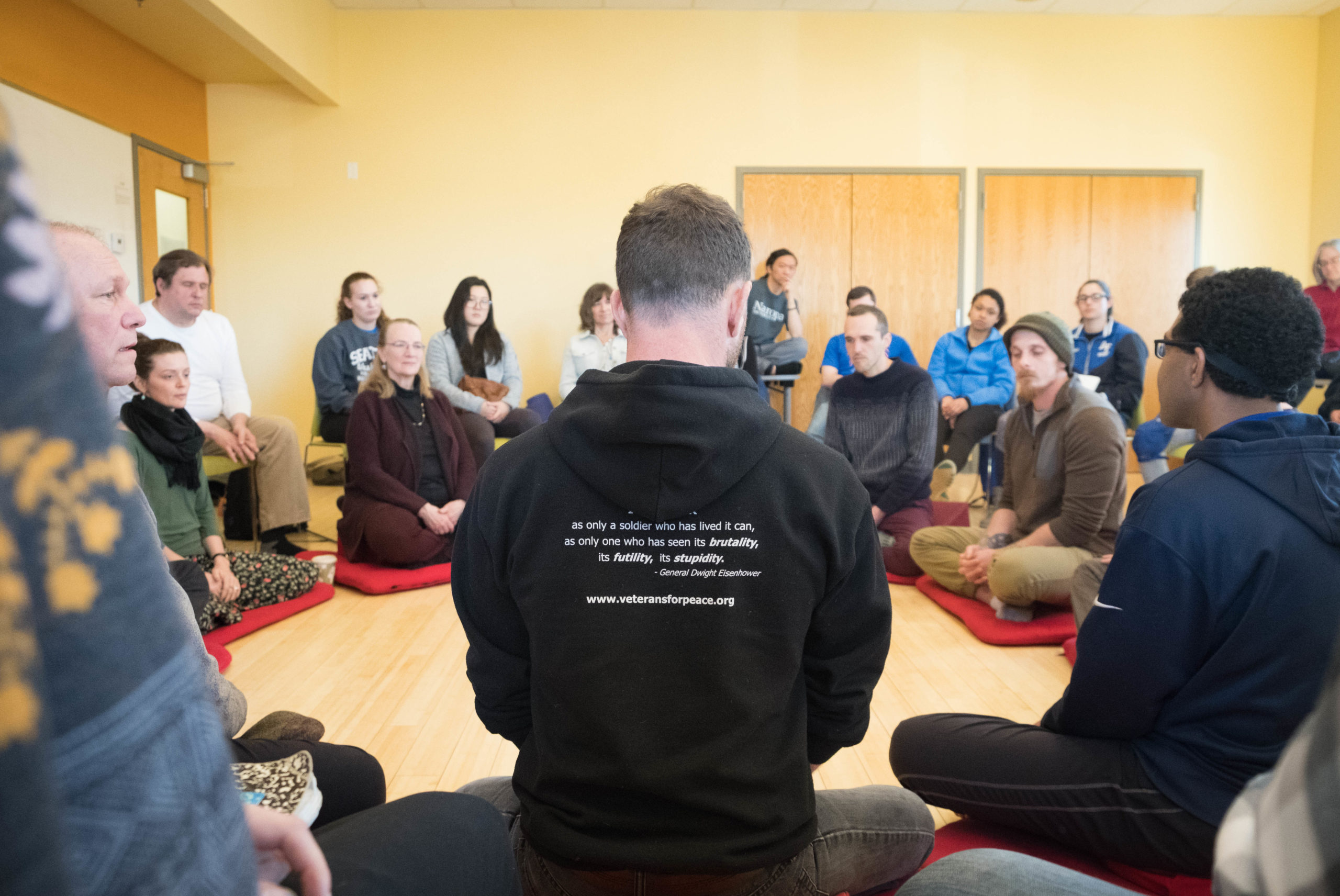
The air of Naropa University is filled with echoes about warriorship. The founder of our university, Chogyam Trungpa Rinpoche, after all, wrote the book Shambhala: The Sacred Path of the Warrior. If you have sat with the words in the pages of this work of art, and contemplated them, you will surely have a feeling of what seems, to me, to be a deep-felt understanding—or gnosis—of the human condition. The depth that most of us turn our awareness away from due to the vast spectrum of human experience being ‘too much’ to handle. It’s much easier to bypass it all by training the eye to see only the beautiful, light things.
“The path of truth is profound—and so are the obstacles and possibilities for self-deception.”
― Chögyam Trungpa, Cutting Through Spiritual Materialism
As a combat veteran, I began to question if others around campus were reading The Sacred Path of the Warrior the same way I was. Afterall, I have a lived experience of what it means to have been to war that paints the lens of my perspective on the arising of life.
To me, the wisdom that comes from the pages is steeped in the harrowing experience of Chogyam Trungpa’s escape from Tibet during the communist invasion, an immense desire to face the truth of the age we live in, and ultimately, a wish to end the suffering of our world. This type of warriorship is not some spiritual outfit to try on because it somehow makes one feel better than one’s fellow human beings—e.g. the whole ‘spiritual gangster’ movement. No. The path of the warrior is about facing the messiness of our world heartbroken, open to it. The warrior does not hide.
“Shadow work is the path of the heart warrior.” — C.G. Jung
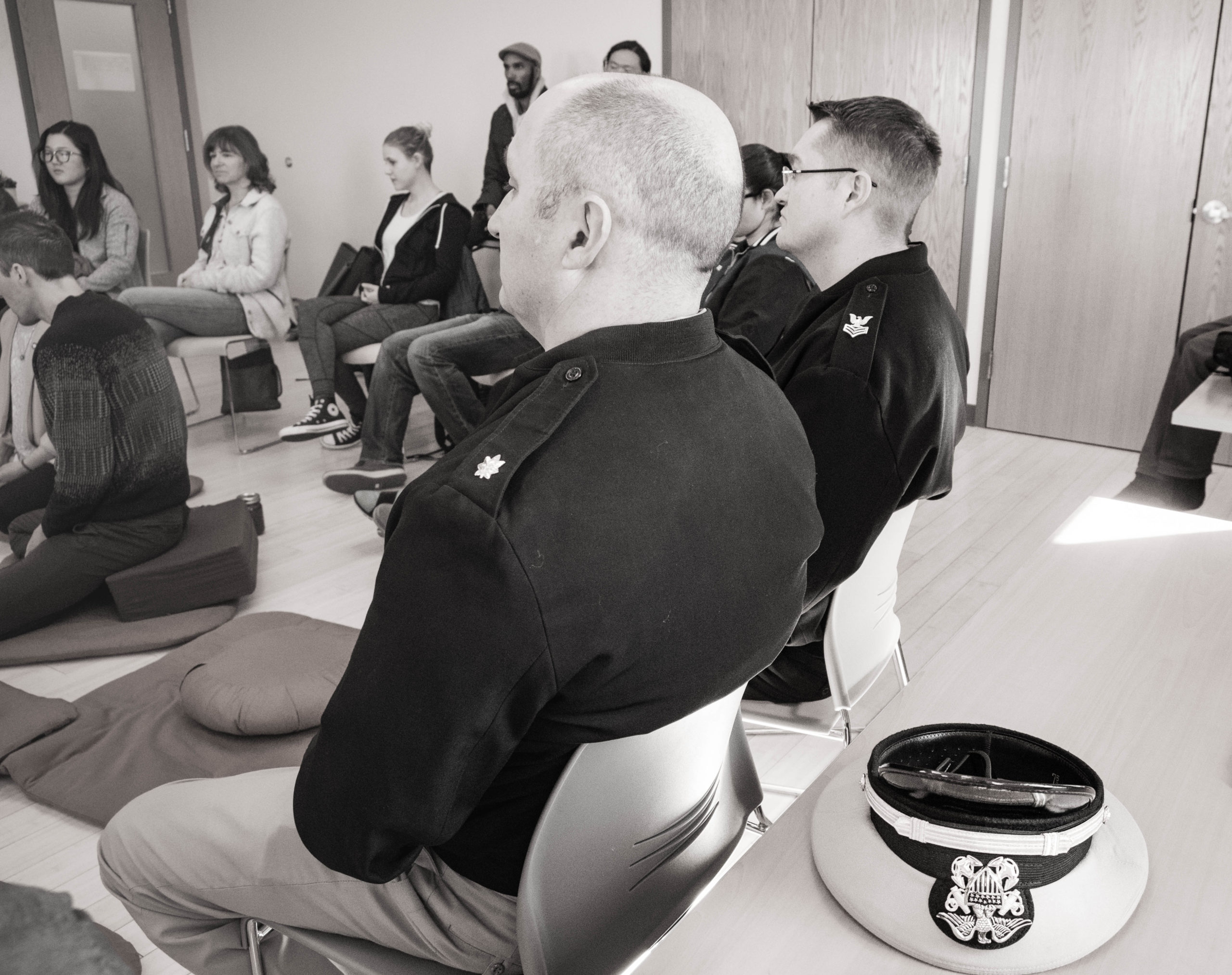
Giovannina Jobson, a student of Chogyam Trungpa Rinpoche, told me that when he would teach warriorship to students, he would begin by having them study actual accounts of war. “He had us read about World War One trench warfare,” Giovannina told me with heavy eyes. I thought about what she said for some time, and thought, “That is missing here today.”
As a student of Naropa University and the university’s Veteran Success Coordinator, I took it on as my mission to bring the narrative of actual warriors back to Naropa; simply because doing the hard work of facing reality and feeling its depth makes for the opportunity to honestly begin to transform it. In my experience of being in relationship with my sisters and brothers of the armed forces, the reason we joined the military stemmed from altruistic intention; and they are some of the most inspiring leaders of peace and reparations I have even had the privilege to meet.
The narrative of this event swept through felt accounts of what war does to the psyche and the heart, to voices telling stories of their brave ability to step into their fears with dignity. DJ, a Naropa student, and Buddhist monk, spoke of a teaching from the Dhammapada. He told us each of us play out battles in our minds between acting morally or not. He said the one who wins this battle is a true warrior. Later during the event, Dr. Judith Simmer-Brown spoke of valor, “being brave enough to show up in the face of danger.”
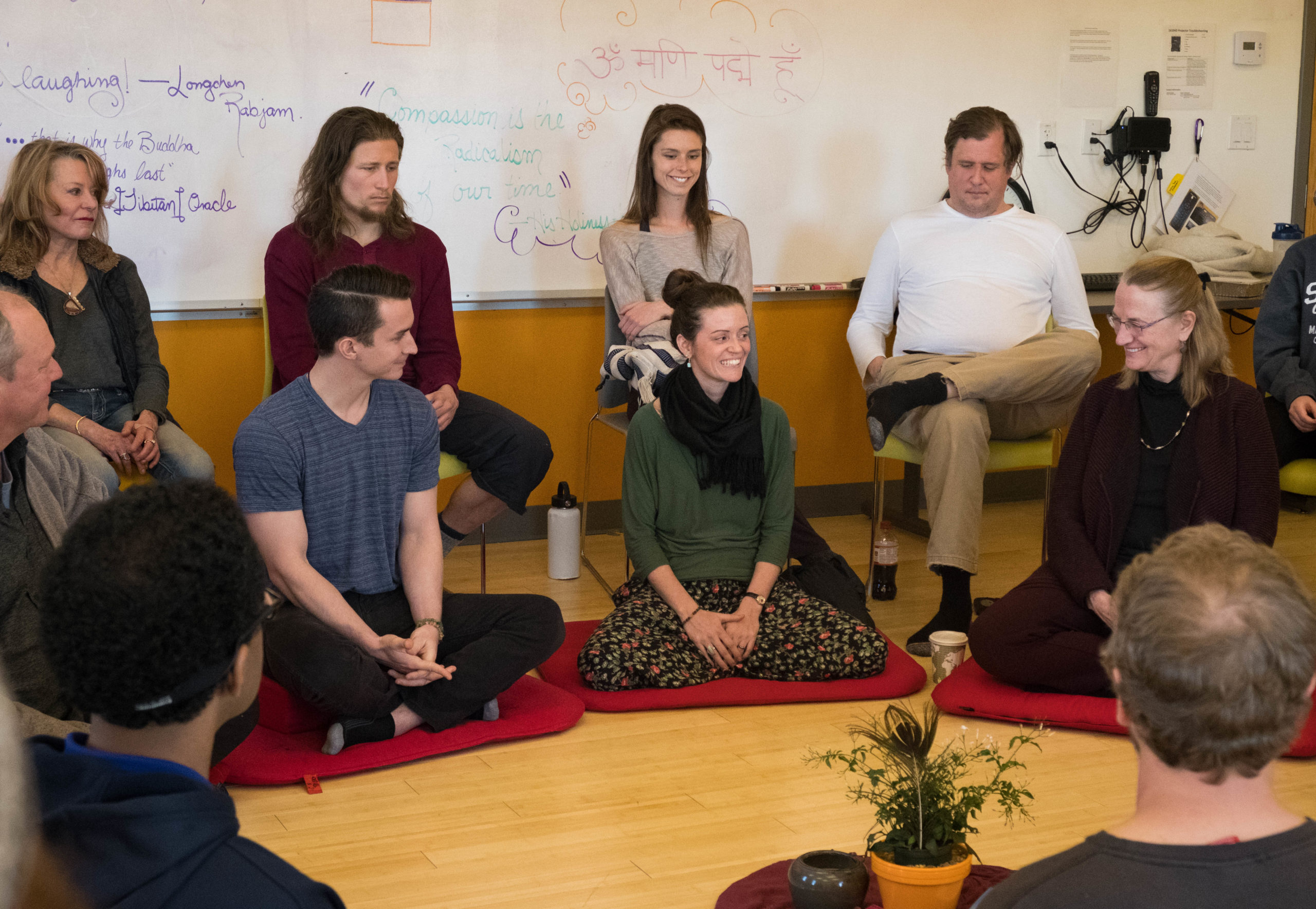
Naropa is filled with progressive minds and those opposed to war. In such a climate, it proves difficult for military veterans to self-identify out of concern of being discriminated against. Some folks have an innocent ignorance of the fact that we warriors are not the military-industrial complex; and I think it is important to raise this awareness and to state that this misconception is dehumanizing.
As Naropa alumni, Dennis Kerr, told me recently about the Voice of the Warrior event, “It was inspiring to connect with everyone sharing their version of being a warrior. Glad to see an authentic interest and expression at Naropa.”
After the event, many of those who attended spoke to the inspiring impact it made on them. The room was filled with laughter, hugs, and smiles. In the words of Dr. Michelle Butler, “It takes a village.” It would not have been possible to create this wonderful space without all of those who showed up and, as Chogyam Trungpa Rinpoche would surely say, took and held their seat.
